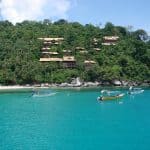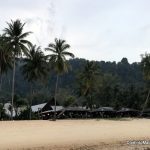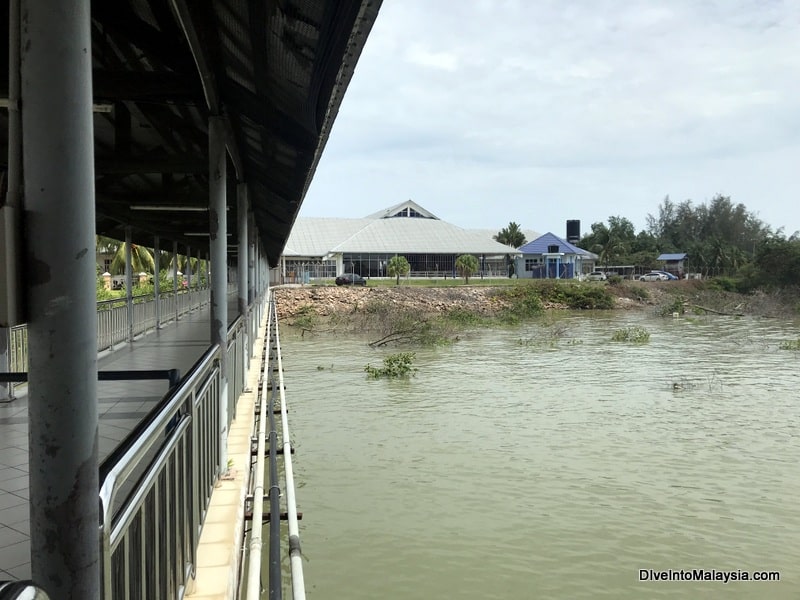If you’re long overdue for a tropical holiday, you might be wondering about the best time to visit Pulau Tioman. Located off Malaysia’s eastern coast, Tioman is home to lush nature preserves, pristine beaches and plenty of wildlife. It offers a stunning underwater environment that’s perfect for diving and snorkeling.
When trying to determine the best time to go to Tioman Island, you’ll need to take the seasons into account. The best time to travel to Pulau Tioman depends on your goals.

In this article, we’ll help you determine the best time to visit Tioman Malaysia. We will also share the pros and cons of each of the two seasons.
Travelling to Malaysia? Click here to download your free Malaysia Trip Planning checklist. We’ll help you get ready for your trip!
Have any questions? Join our Malaysia Travel Planning Facebook group here now! It’s the perfect place to ask any questions and to be inspired.
Contents
Best Time To Visit Tioman Island, Malaysia
The best time to travel to Tioman Island is between March and October. This is considered the Tioman Island best time to go because it’s the dry season.
Everything is open, ferries run regularly and it’s the best time to experience the underwater life. This is because the rain lowers underwater visibility making dry season the best time to dive in Tioman.
Travel during monsoon season is possible, but your guesthouse and eating options will be limited. Boats to and from the mainland don’t run as often, and they’re often cancelled due to bad weather. The rough and stormy seas can also make for a mean case of seasickness.
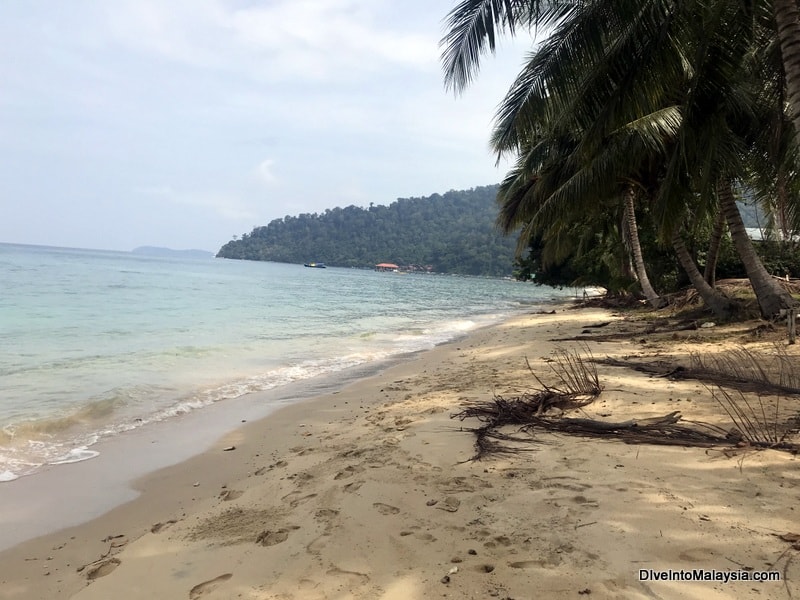
Plus, there’s always the risk that your boat could capsize. Hardcore adventurers might not mind these conditions, but the average traveler who is wondering when to visit Tioman Island will most likely want to avoid monsoon season.
Surfers are the exception. If you plan on catching some waves, the Pulau Tioman best time to go is monsoon season. The storm swells create awesome surfing conditions. However, you might get stuck on the island due to bad weather, so this option is better for travelers with open-ended plans.
Many locals believe the Tioman Island best time to visit is during the school breaks which take place during March, June, and September.
If you’re a traveler from outside the country, you might want to avoid these peak times. Accommodations will be pricier due to higher demand. You’ll be better off visiting after the holidays in September or in April or May. Diving conditions are usually perfect by May, offering underwater visibility up to 30 metres.
The only negative of the dry season is the mild haze that forms towards the end of it. It’s usually not noticeable, but it can sometimes build up due to the lack of fresh rain to clear the air.
Tioman Island Weather
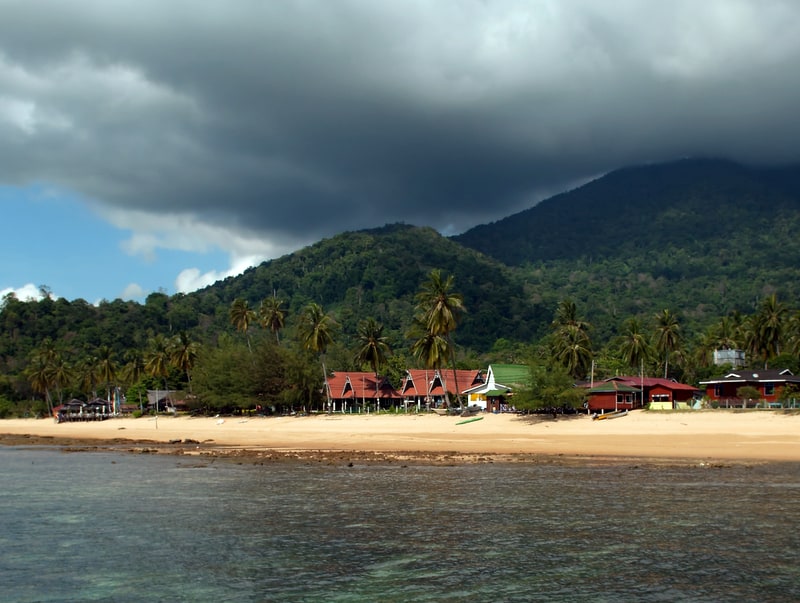
Dry Season
As a general rule, the dry season is the Tioman best time to visit. Temperatures range between 30 and 32 degrees Celsius. There’s an average of 240 to 310 millimeters of rainfall.
If diving is your goal, this is the Tioman best time to go as well.
The rainy days slowly increase throughout September and October as the wet season approaches.
If you are interested in diving, don’t miss out on our two special diving experiences below. These offers include accommodation, diving and breakfast and are the best and easiest way to enjoy diving in Tioman.
Monsoon Season Tioman
In monsoon season, temperatures range between 25 and 30 degrees. You can expect between 100 and 350 millimeters of rain. The Tioman monsoon period lasts from November to March.
While travel to and around Tioman can be difficult during this time, and many of the popular resorts might be closed, many travelers still consider Pulau Tioman monsoon season the best time to visit.
Poor underwater visibility, storms, and intense currents make diving dangerous, but for an adventurous surfer, the conditions are ideal. Hikers who want to explore the inner parts of the island may also enjoy this time of year.
It doesn’t rain constantly, so there will be opportunities to go out and enjoy the beautiful scenery. The few available guesthouses will be cheaper and less crowded.
As mentioned earlier, it can be more difficult to find a boat to take you to the island during wet season. If you want to visit during this time of year, you’ll need to be flexible with your travel dates. Always make sure to leave a wide cushion of time between your departure from the island and your onward flight out of Malaysia.
Click here to see the ferry schedule.
Final Words About the Best Time to Go Tioman Island
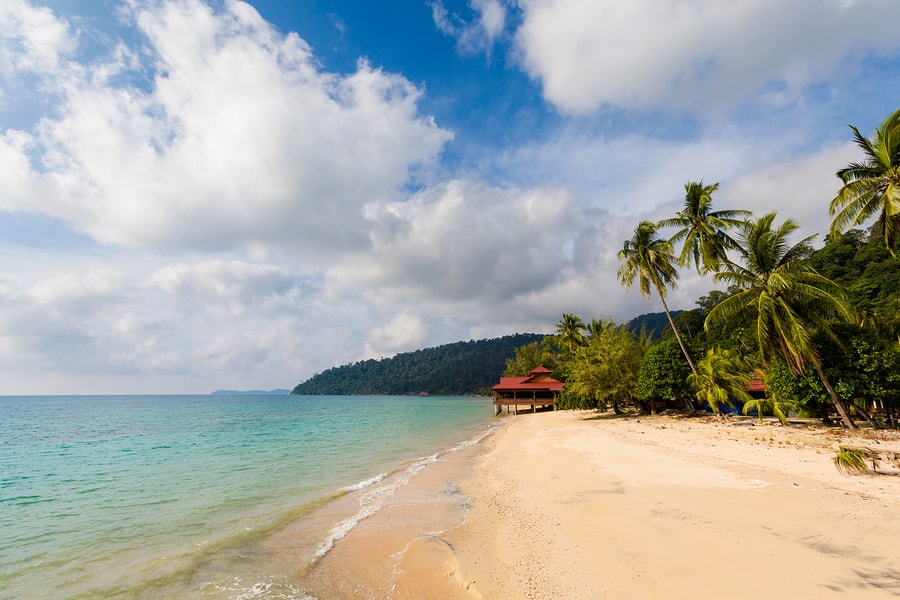
As you can tell, the Pulau Tioman best time to visit depends on your individual goals.
Unless you’re a surfer or a passionate outdoor enthusiast who doesn’t mind hiking through muddy jungles, your best bet will be to visit during the dry months.
While Tioman is lovely all year round, arriving during the dry season will give you the best opportunity to make the most of your trip.
Click here to read our full guide to things to do in Tioman Island. You can also find our full Tioman Island travel guide here.
Planning a trip to Malaysia? Have any questions? Join our Malaysia Travel Planning Facebook group here now! It’s the perfect place to ask any questions and to be inspired!

